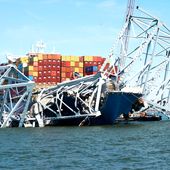ASSOCIATED PRESS
Those polluting-engine mowers that are a staple of suburban lawn care would become much cleaner under emission limits proposed yesterday.
The regulators’ proposal follows a long-running dispute between Sen. Dianne Feinstein, California Democrat, and Sen. Christopher S. Bond, Missouri Republican, who has sought to block the change in order to protect a small-engine maker in his home state, Briggs & Stratton Corp.
Engines under 50 horsepower, which are mostly used to power walk-behind and riding mowers, account for up to 10 percent of summertime smog-forming emissions in some parts of the country.
The Environmental Protection Agency’s proposal would cut smog-forming emissions from the engines by 35 percent. The reductions would probably be accomplished by adding catalytic converters that reduce pollution from exhaust. The rule would take effect in 2011 for riding mowers and 2012 for push mowers and would apply only to new engines.
Adding catalytic converters will make mowers more expensive, and some in the industry resisted the change. The California Air Resources Board has estimated that walk-behind mowers will cost 18 percent more under the new regulation, while the price of commercial turf care mowers will go up about 3 percent.
California already has enacted the rule. The nation’s most-populous state has unique authority under the Clean Air Act to establish its own pollution rules if it’s granted a federal waiver. California got the small-engine waiver in December and put the rule into effect on Jan. 1.
Mr. Bond had initially sought to block California from instituting its regulation but backed off under pressure from Mrs. Feinstein. He did succeed in blocking other states from being able to copy California’s rule, something the Clean Air Act normally allows. Instead, he required EPA to write the national standard that was proposed yesterday.
Mr. Bond had questioned whether mowers with catalytic converters could spark fires, but an EPA study last year found there was no safety problem.
“As the author of the statutory provision requiring EPA to issue a national rule, I am glad to see this day,” Mr. Bond said in a statement. “Contrary to California’s ready, fire, aim approach in this area, EPA’s deliberate and thoughtful process has considered safety concerns.”
Laura Timm, director of corporate communications with Briggs & Stratton, which employs about 1,100 workers at two plants in Missouri, said the company welcomed a national rule instead of one which would apply just to one state.
The rule also would put new emission controls on powerboat and outboard engines starting with the 2009 model year that would result in a 70 percent reduction in smog-forming emissions from those engines, EPA said. Public comment is being accepted on the proposed rule until Aug. 3.
“The bottom line is these standards are long overdue, but they will be absolutely essential in order to help many parts of the country meet public health standards,” said Frank O’Donnell, president of Clean Air Watch, an environmental advocacy group.



Please read our comment policy before commenting.